Week 20, 21 & 22 - Training ConvLSTM-4 for raw samples
Increase the number of layers
Once the best recurring strategy is obtained, we try to improve the results by increasing the number of layers, according to the conclusions reached in the modeled images. I have repeated the experiment with the modeled images, this time with raw images, to analyze the effect of increasing the number of layers on the network performance.
- Sinusoidal dataset, 4 DOF, 80000 training samples, 10000 test samples
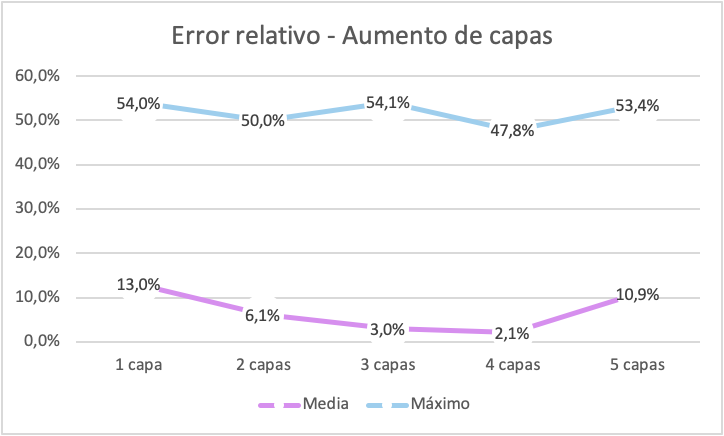
The best results are obtained with 4 layers ConvLSTM so it will be the structure used.
Proposed net
The new defined network is as follows:
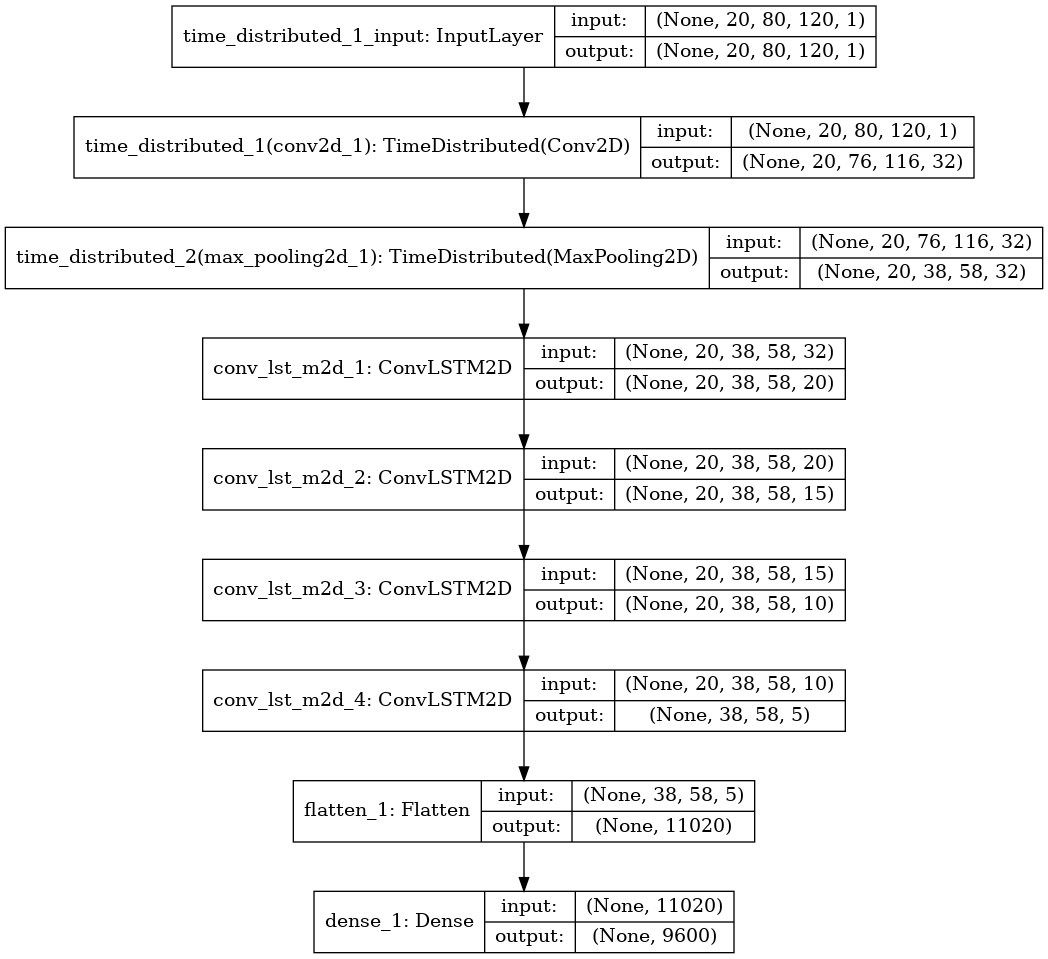
You can see that I have also reduced the number of previous convolutional layers since the server where the networks are trained has enough memory to analyze more values. Furthermore, its use could be reducing the spatial information too much, worsening the results.
Linear dataset results
- 2 DOF, 80000 training samples, 10000 test samples

Parabolic dataset results

Sinusoidal dataset results
- 2 DOF, 80000 training samples, 10000 test samples
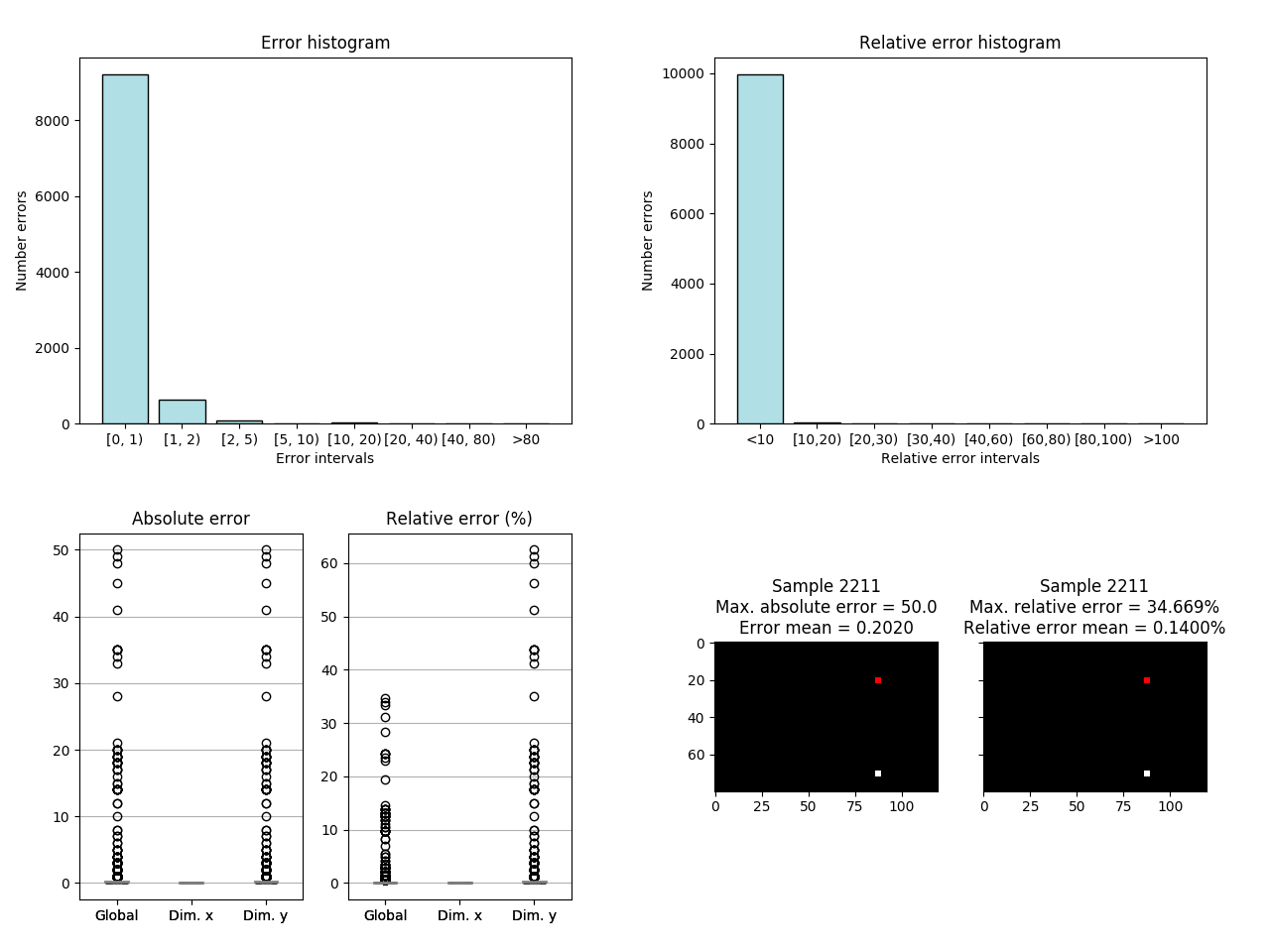
- 3 DOF, 80000 training samples, 10000 test samples
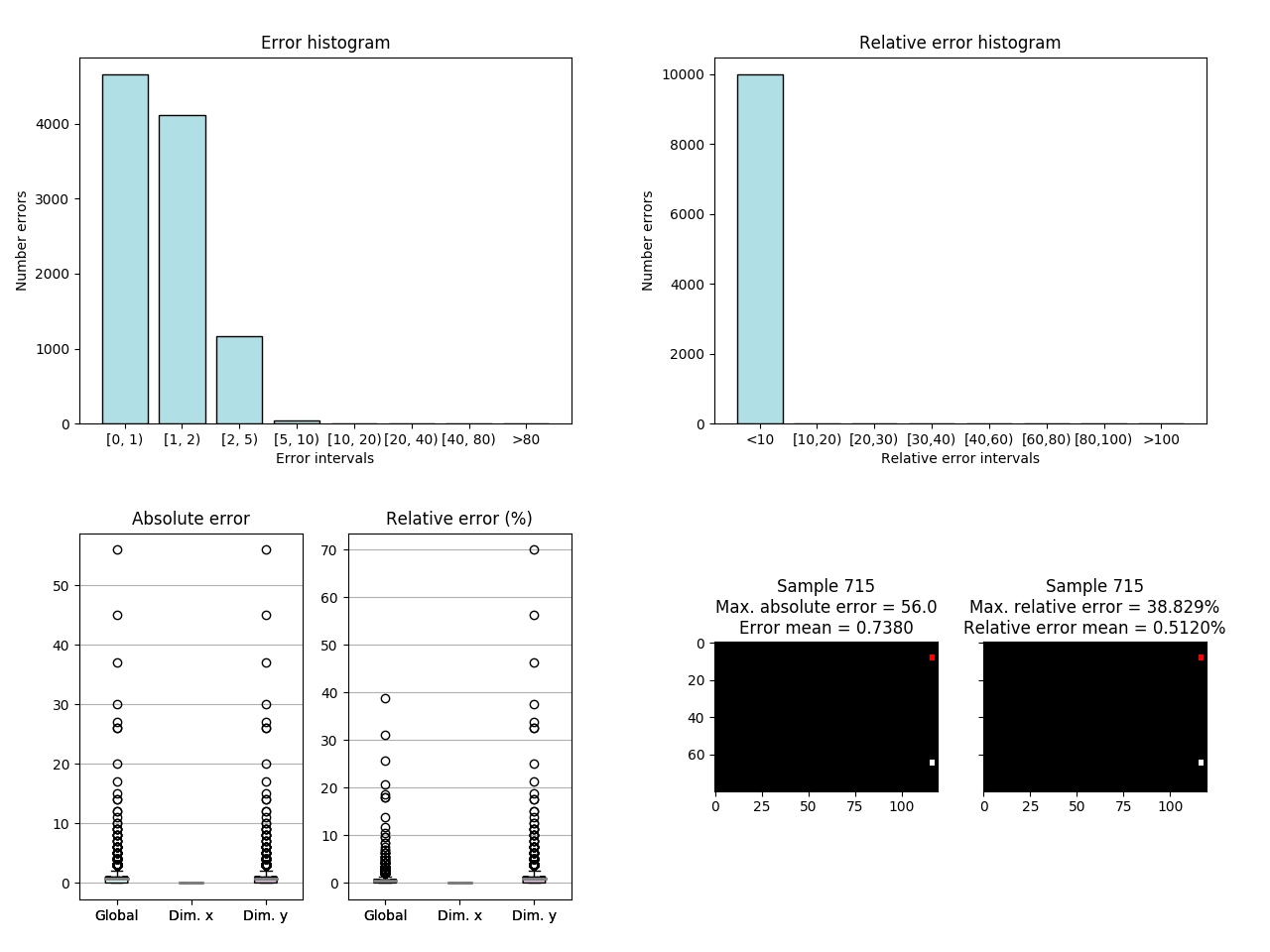
- 4 DOF, 80000 training samples, 10000 test samples
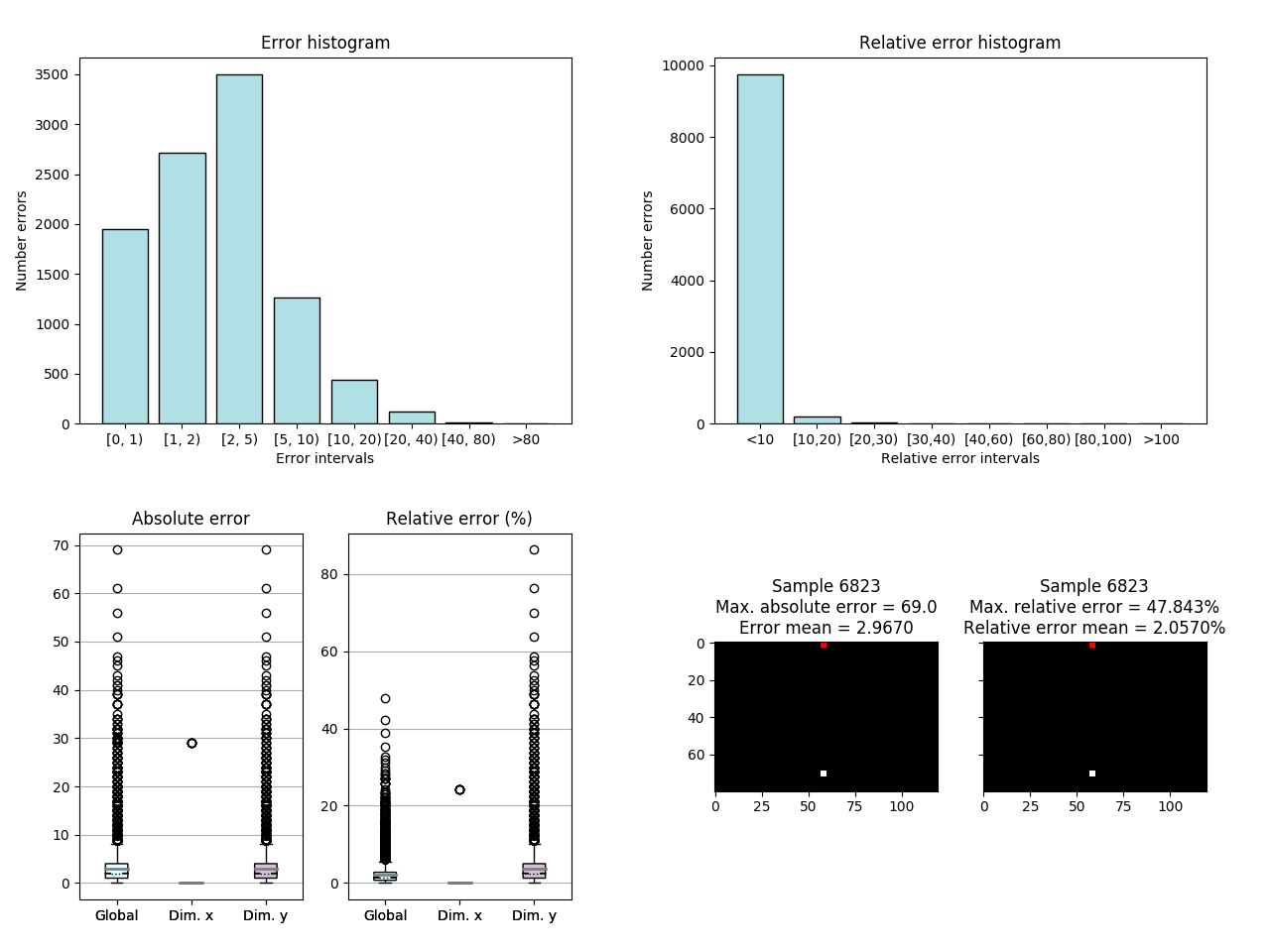
Combined dataset results
- Combined 33%-33%-34%, 80000 training samples, 10000 test samples

Conclusions
Although the results have improved in terms of mean relative error, there is still a prediction limit in the parabolic 2 DOF and a new limit in the sinusoidal 4 DOF. In addition, there are still high maximum values and a large number of outliers.